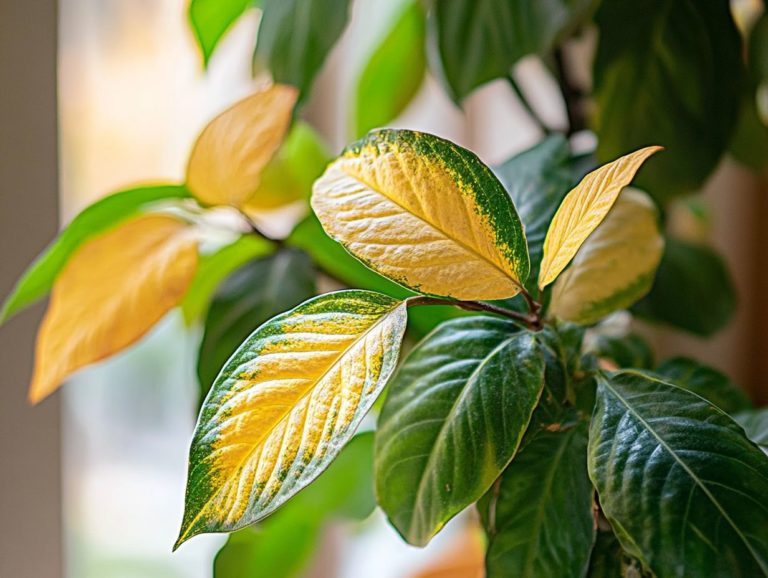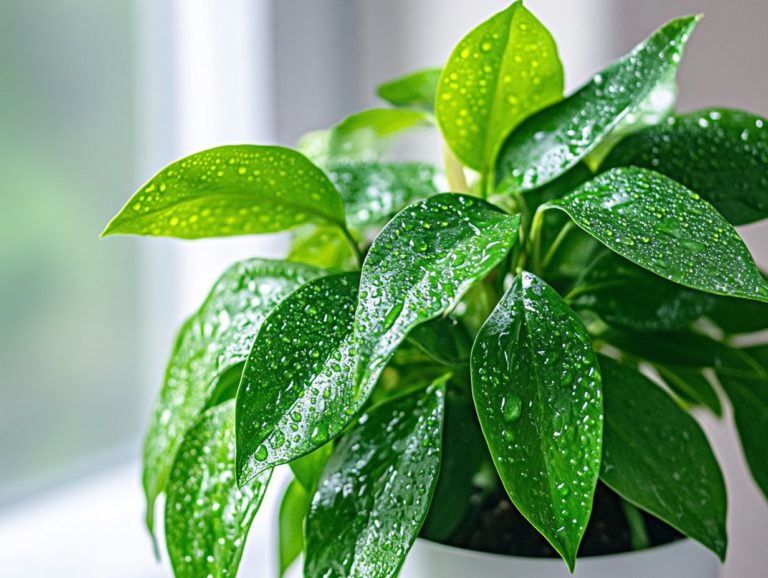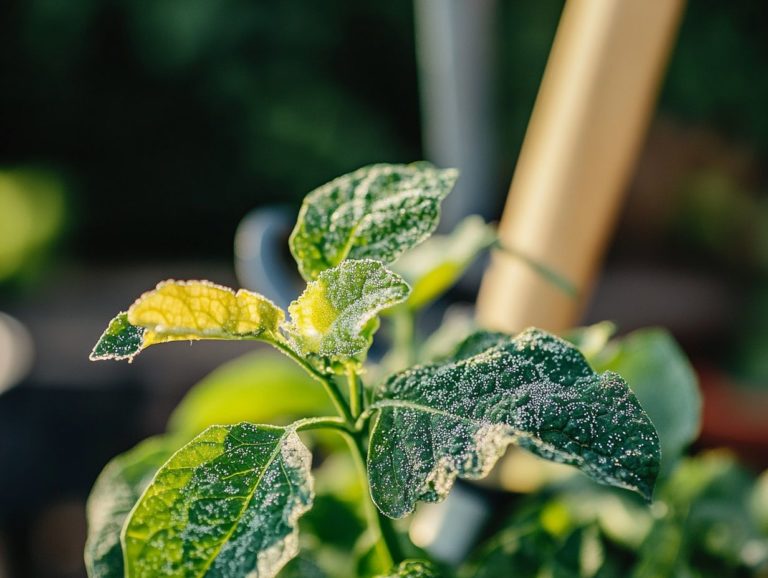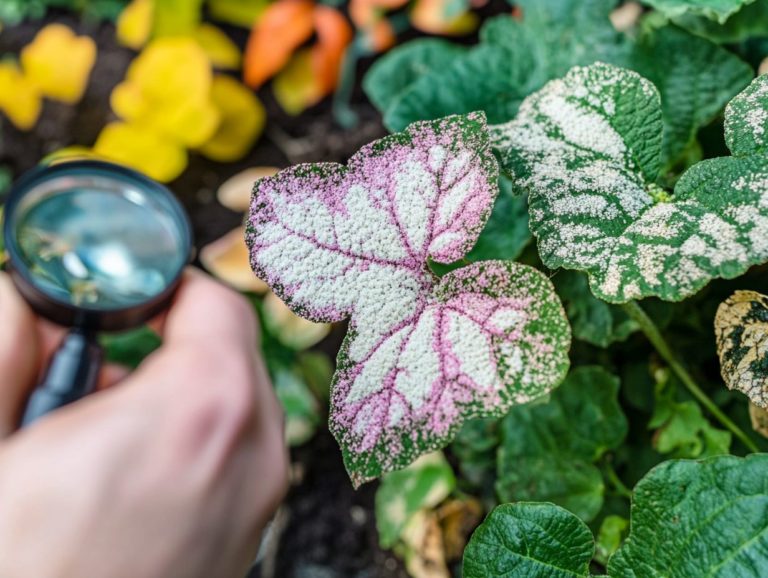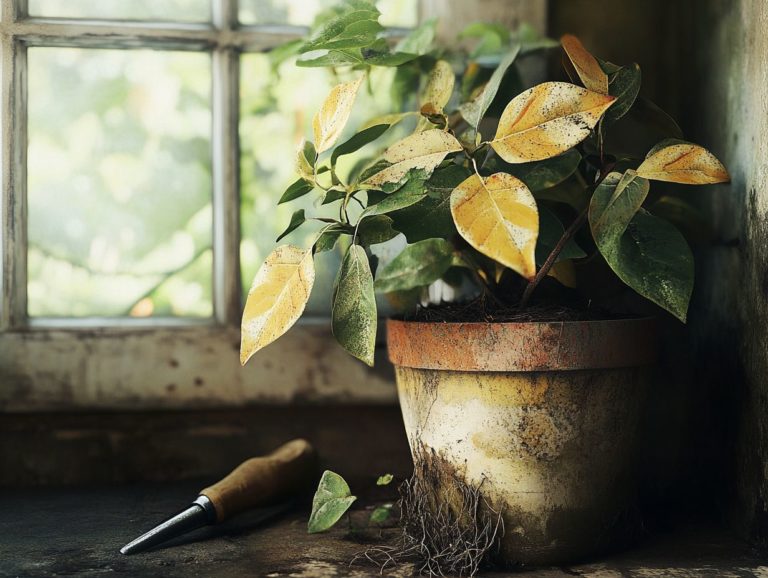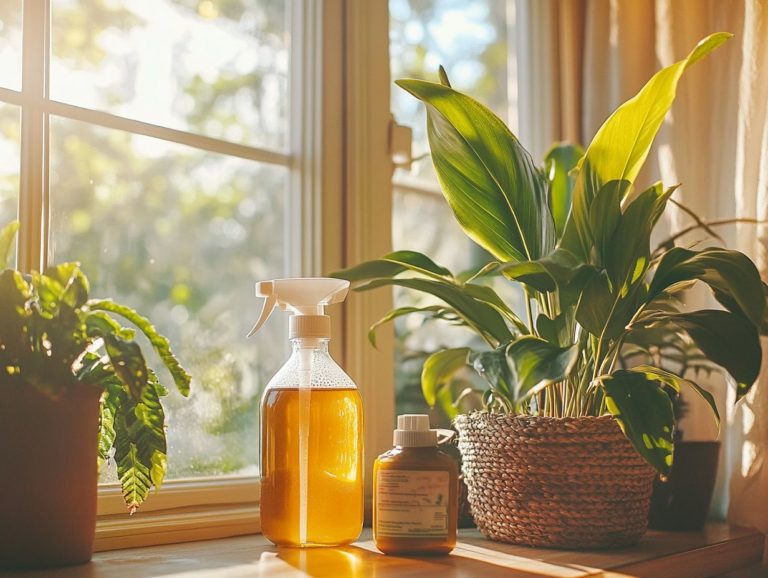Understanding Indoor Plant Pests and Their Impact
Indoor plants can transform your space into a vibrant sanctuary. However, they often attract some uninvited guests: common houseplant pests.
From aphids to spider mites, these tiny intruders can disrupt your green companions. Get ready to explore how to tackle the pests threatening your indoor paradise!
This article will guide you on how to identify different types of indoor plant pests and the damage they can cause. You ll discover effective prevention and management strategies to keep your plants healthy and thriving.
Learn to recognize the signs of infestation and safeguard your indoor oasis from potential harm.
Contents
- Key Takeaways:
- Common Indoor Plant Pests
- Preventing and Managing Indoor Plant Pests
- Signs of Pest Infestation
- Impact of Indoor Plant Pests
- Frequently Asked Questions
- What are indoor plant pests and how do they impact plants?
- What are some common indoor plant pests to watch out for?
- How do indoor plant pests enter and spread in my home?
- What are some signs of an indoor plant pest infestation?
- How Can You Stop Indoor Plant Pests?
- Are indoor plant pests harmful to humans?
Key Takeaways:
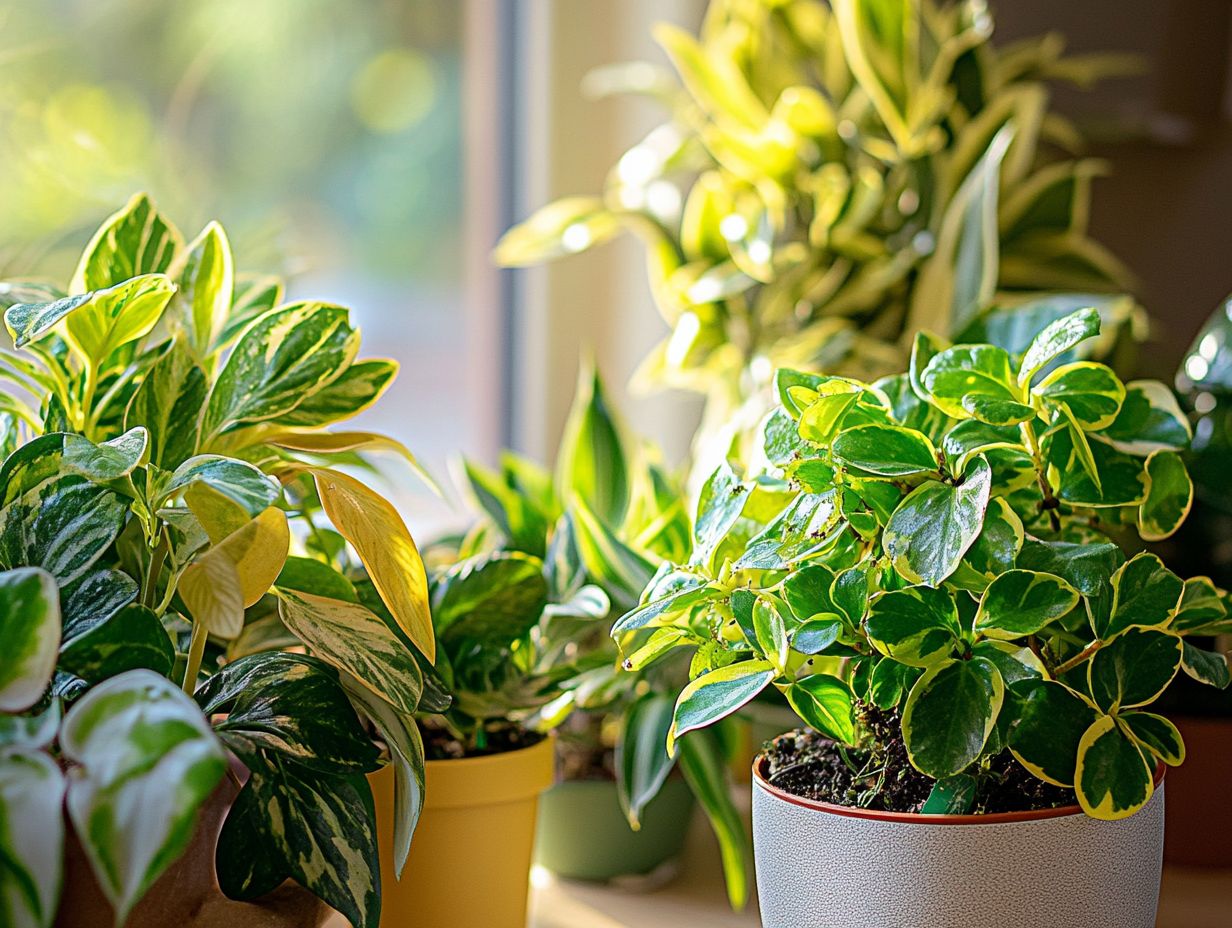
- Indoor pests can damage your plants and may affect your health. Timely identification and action are essential!
- Regularly inspect your plants and practice good care to keep pests at bay.
- Healthy plants make your space look great and improve air quality. Keep them thriving by understanding pest management!
Common Indoor Plant Pests
Indoor gardening offers a rewarding journey, but it also presents challenges chief among them, pesky houseplant invaders. Identifying and managing these pests is vital for the well-being of your indoor oasis.
From aphids to spider mites, these unwelcome guests can wreak havoc, affecting your plants and even the air quality in your home. Understanding pest control, recognizing beneficial insects, and employing effective methods are key to nurturing a flourishing indoor garden.
Rita Pelczar and Joseph Tychonievich provide invaluable insights into these practices, guiding you through the intricate world of pest control for your beloved houseplants.
Types of Pests and Their Damage
Knowing the types of common houseplant pests is essential for your plant care success. Each pest, from aphids and spider mites to fungus gnats and mealybugs, presents unique challenges to your plants’ health.
By recognizing the specific damage they inflict, you can pinpoint the right pest control strategies early on, preventing extensive harm to your cherished indoor garden.
Understanding their life cycles and behaviors allows you to take proactive measures against these intruders, ensuring your houseplants flourish in a pest-free haven.
For example, aphids are small, soft-bodied insects that often congregate on the undersides of leaves, sucking plant sap and causing distorted growth. Spider mites, though tiny, leave delicate webbing and yellow spots on leaves, weakening plants like Alocasia.
Fungus gnats thrive in moist soil. They can damage roots, leading to stunted growth and wilting leaves, especially in sensitive specimens like African violets. Mealybugs manifest as white, cottony masses that drain nutrients and cause leaves to drop.
By familiarizing yourself with these pests and their impacts, you can better safeguard your beloved greens. Don t wait! Start inspecting your indoor plants today and keep them healthy!
Identification and Characteristics
Identifying common houseplant pests is essential for early intervention and effective pest control strategies. By knowing how to spot pests like aphids, spider mites, and mealybugs, you can take action before infestations spiral out of control.
Each pest has its own distinctive traits. For instance, aphids tend to leave a sticky residue known as plant sap, while spider mites may create fine webbing on your plants. Understanding these characteristics aids in your recognition efforts and helps you select the right treatments, ensuring your indoor garden thrives.
As you observe the leaves and stems of your houseplants, watch for curled or yellowing foliage, which often signals the presence of pests. Mealybugs, with their white, cottony appearance, typically hide in leaf axils or at the base of stems, and their feeding can lead to stunted growth.
Additionally, tiny black specks may indicate aphid droppings, known as honeydew. If not addressed swiftly, this can attract even more pests. By staying vigilant for these signs, you can maintain a flourishing indoor garden environment.
Preventing and Managing Indoor Plant Pests
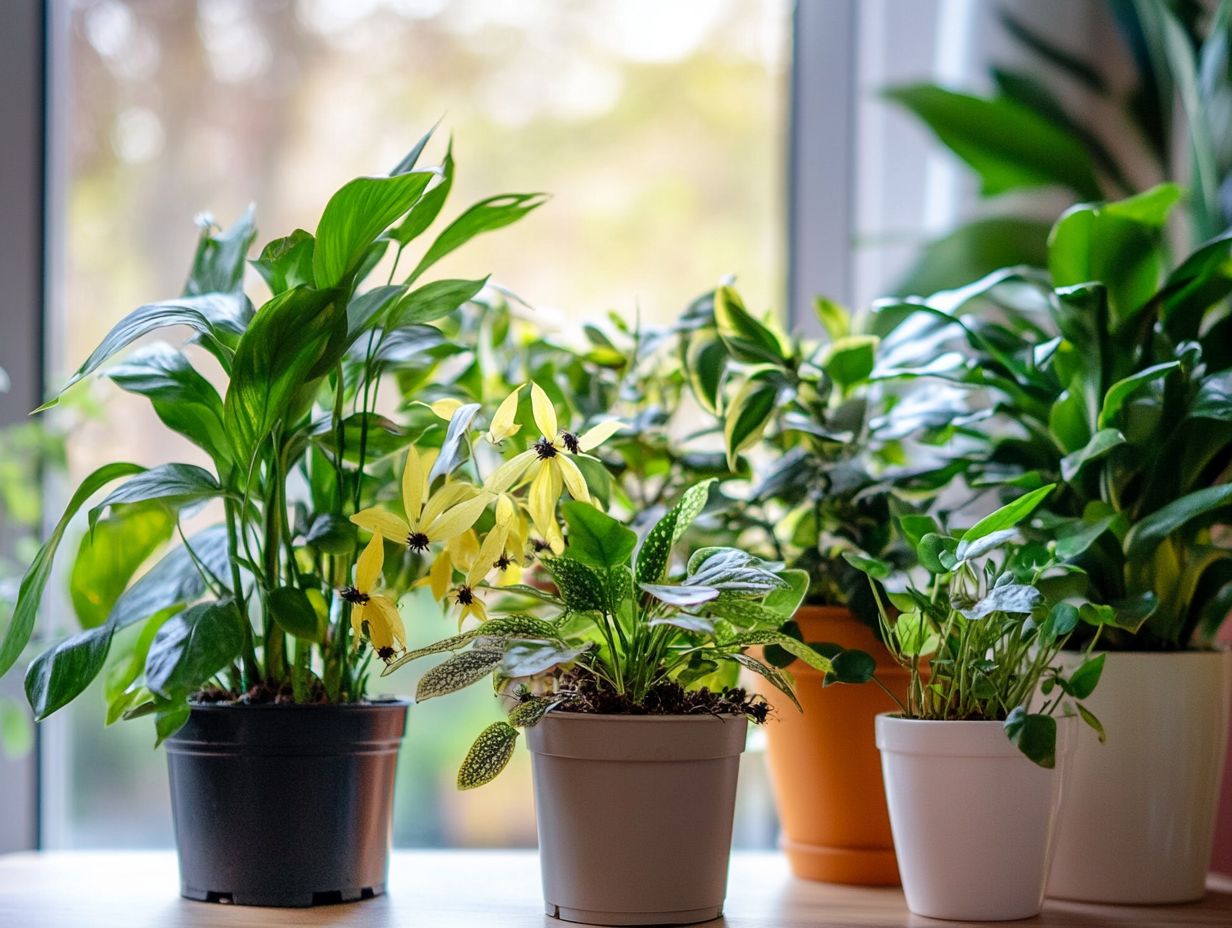
Preventing and managing indoor plant pests is crucial for cultivating a flourishing indoor garden. Kickstart your pest control by using proactive strategies designed to deter pests from infiltrating your beloved houseplants.
Consider employing beneficial insects, applying neem oil, or using insecticidal soap as part of a comprehensive pest control plan. By identifying the optimal methods suited to the needs of your plants and their environment, you can safeguard your indoor garden from common pests while fostering sustainability.
Effective Pest Control Methods
Implementing effective pest control methods is essential for safeguarding your indoor plants. Techniques like using insecticidal soap and neem oil have proven effective in managing infestations while being gentle on the environment.
Introducing beneficial insects such as ladybird beetles and green lacewings can offer a natural solution to pest problems. Each method can be tailored to fit within an integrated pest management strategy, ensuring a holistic approach to plant care while minimizing harm to your plants and the ecosystem.
By understanding products like Bacillus thuringiensis a natural bacteria that targets specific pests you can achieve targeted pest control that promotes your plants’ health.
When dealing with nuisances like aphids or whiteflies, you might consider chemical options that directly target these pests. However, be cautious; these often pose risks to beneficial species.
Natural methods such as applying diatomaceous earth mechanically disrupt the pests’ exoskeleton without introducing harmful chemicals into the environment. This careful balance allows you to maintain a thriving indoor ecosystem where your plants can flourish while managing pest populations effectively.
By utilizing combinations of these strategies, you can create a more sustainable approach that reduces reliance on harsh pesticides.
Signs of Pest Infestation
Recognizing the signs of pest infestation is essential for ensuring timely intervention and effective pest control in your indoor garden. Look for common indicators such as sooty mold or sticky residue from sap, which can signal the presence of pests like aphids and whiteflies.
Early detection gives you the power to implement appropriate measures before infestations escalate, potentially saving your cherished houseplants from severe damage. By familiarizing yourself with these warning signs, you can act swiftly, cultivating a thriving indoor environment for all your plant care endeavors.
Recognizing and Addressing Infestations
Recognizing and addressing infestations of common houseplant pests is an essential skill for you as an indoor gardener. Being aware of the specific pests that might invade your plants like mealybugs and spider mites allows you to take swift action before any damage occurs.
Implementing effective pest control measures, such as isolating affected plants or applying targeted treatments, can significantly reduce the threat to your indoor garden. By remaining vigilant and informed about pest behaviors, you can effectively safeguard your houseplants and ensure their ongoing health against threats like spider mites and mealybugs.
To catch an infestation early, keep an eye out for subtle changes in your plants’ health, such as yellowing leaves or webbing between branches, which often signal spider mites. Don t forget to regularly inspect the undersides of leaves, where pests like aphids and scale love to hide.
Once you identify a problem, using neem oil or insecticidal soap can be a powerful method tailored to the specific pests you re dealing with. Placing sticky traps can help capture flying pests like fungus gnats for a complete pest management strategy. Early intervention not only saves your plants but also encourages a thriving indoor ecosystem.
Impact of Indoor Plant Pests
Let’s explore how pests can affect your plants and home.
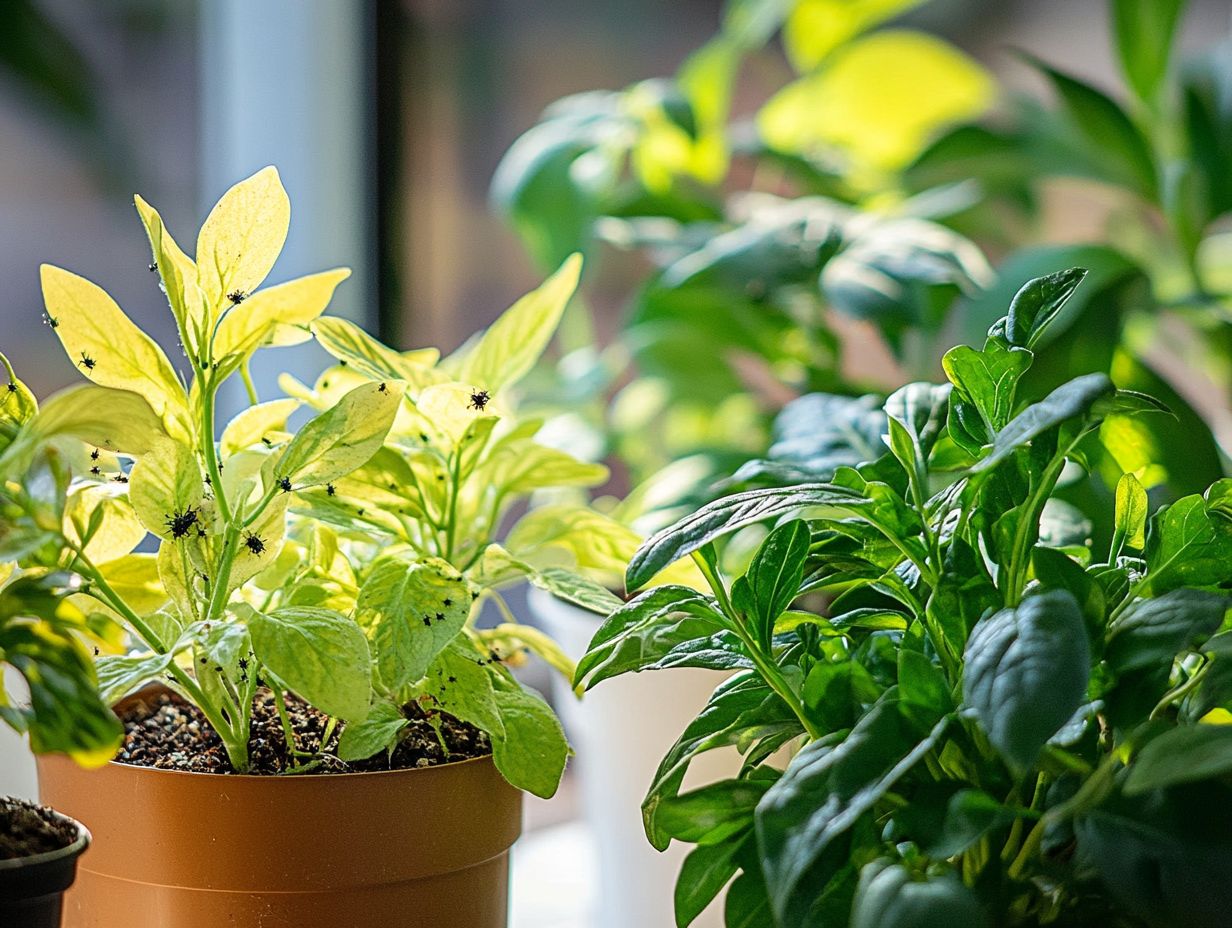
Indoor plant pests can seriously harm your plants and living space. Pests such as aphids and spider mites don t just wreak havoc on your greenery; they can also give rise to sooty mold, a black fungus that can cover leaves and may affect the air quality you breathe.
Understanding these ramifications is vital for every gardener, as it underscores the significance of consistent plant care and effective pest management practices. By tackling infestations early, you can minimize damage and ensure that your indoor garden flourishes into a vibrant oasis.
Damage to Plants and Health Risks
The damage caused by indoor plant pests can show up in various ways, compromising plant health and potentially posing health risks for you and your household. Common houseplant pests like aphids, mealybugs, and spider mites can weaken your plants, leading to stunted growth, unsightly discoloration, and even the unwelcome spread of sooty mold. These infestations may also worsen allergies for some, making pest management a top priority for maintaining a healthy indoor environment.
Understanding the diverse impacts of pest infestations is crucial for effective pest control and thoughtful plant care. Pests like fungus gnats and scale insects can bring about additional problems, such as soil deterioration and further plant decay. These nuisances not only detract from the beauty of your plants but can also trigger respiratory issues or skin irritation in sensitive individuals. To manage these pests effectively, consider using traps for indoor plant pests.
Regular inspections are crucial and should not be overlooked! Incorporating natural pest deterrents, like neem oil or insecticidal soap, can effectively combat infestations while keeping your indoor ecosystem intact. Additionally, using traps to manage indoor plant pests ensures you are proactive in maintaining plant health. Ensuring proper watering practices and good air circulation creates an environment less inviting to pests, ultimately promoting both plant vitality and your overall well-being.
Maintaining Healthy Indoor Plants
Maintaining healthy indoor plants requires an active care approach to plant care, especially when it comes to pest control. Regularly monitoring for common houseplant pests like aphids, mealybugs, and spider mites is essential to keeping your plants vibrant and thriving.
By implementing effective plant care strategies such as preventive measures and promptly addressing any infestations you can boost your plants’ health dramatically! Investing time to understand your plants needs and potential threats will enable you to cultivate a flourishing indoor environment.
Establishing a consistent plant care routine, which includes watering schedules, monitoring moisture levels, and appropriate lighting, is vital for nurturing a robust indoor garden. Embrace a hands-on approach by regularly inspecting leaves and soil conditions; this not only helps prevent pests but also promotes overall plant health.
Adopting environmentally friendly pest control strategies, such as introducing beneficial insects or using organic sprays, can effectively combat infestations without harming your plants. By prioritizing these best practices, you can create and maintain an inviting indoor oasis that remains delightful and disease-free.
Frequently Asked Questions
What are indoor plant pests and how do they impact plants?
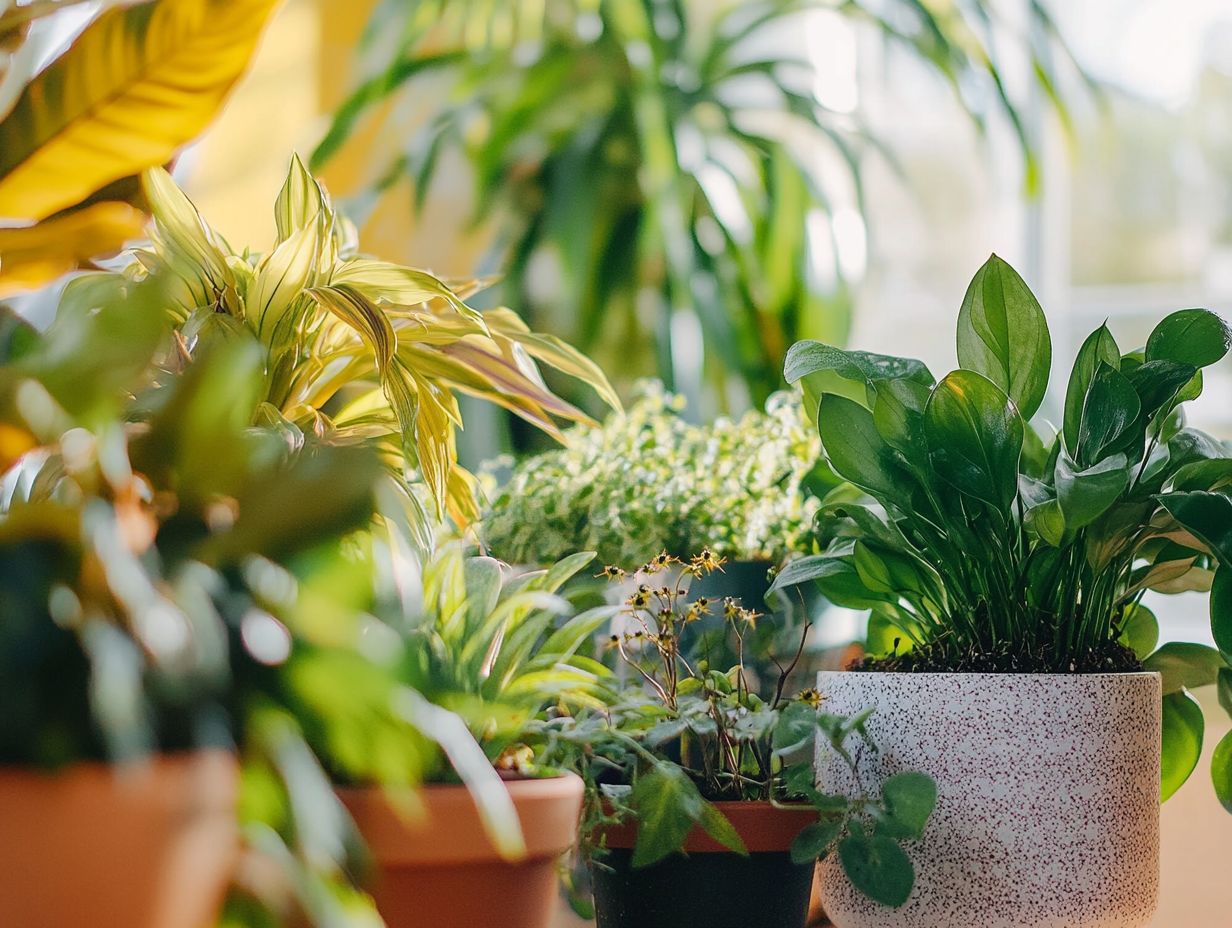
Indoor plant pests refer to insects, mites, and other organisms that can cause harm to your indoor plants. They can impact plants by damaging leaves, stems, roots, and flowers, leading to stunted growth, wilting, and even death.
What are some common indoor plant pests to watch out for?
Some common indoor plant pests include mealybugs, aphids, spider mites, scale insects, and fungus gnats. These pests can be identified by their small size, presence of webbing or sticky residue, and visible damage to plants.
How do indoor plant pests enter and spread in my home?
Indoor plant pests can enter your home through infested plants, pots, soil, or other infested materials. They can also hitch a ride on pets or people. Once inside, they can spread to other plants through contact or by flying or crawling from one plant to another.
What are some signs of an indoor plant pest infestation?
Signs of an indoor plant pest infestation may include visible damage to plants, such as holes in leaves, wilting, or yellowing, as well as the presence of pests themselves. You may also notice webbing, sticky residue, or small bugs crawling on your plants.
How Can You Stop Indoor Plant Pests?
To prevent indoor plant pests, inspect new plants before bringing them into your home and quarantine them for a few weeks. Keep your plants healthy by providing proper light, water, and nutrients. If an infestation occurs, remove heavily infested plants and use natural or chemical treatments to control the pests.
Are indoor plant pests harmful to humans?
While indoor plant pests can cause harm to your plants, most of them are not harmful to humans. However, some pests, such as spider mites, may cause skin irritation or allergic reactions in sensitive individuals. It is always best to use caution when handling infested plants and to wash your hands afterward.

